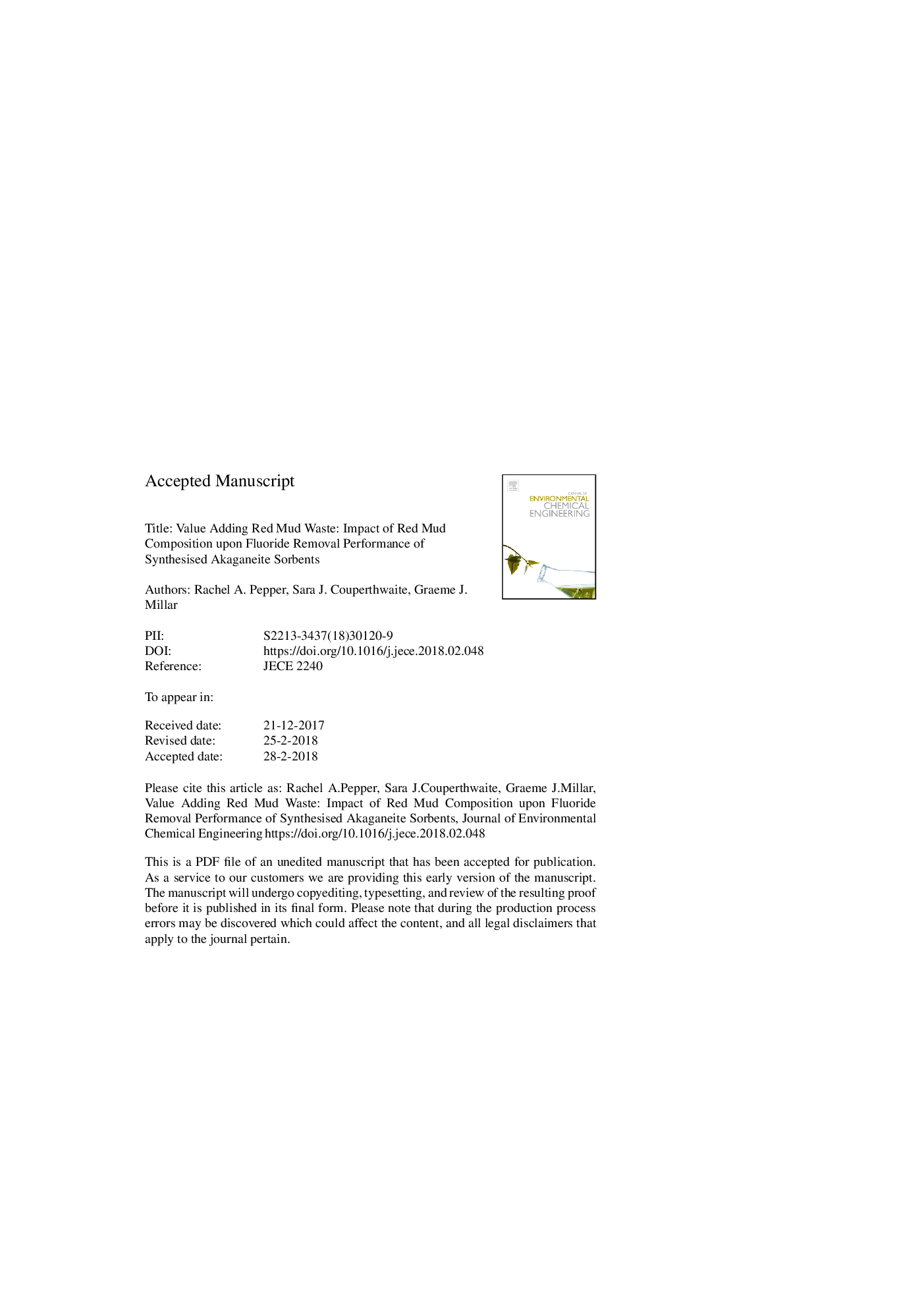| Article ID | Journal | Published Year | Pages | File Type |
|---|---|---|---|---|
| 6664007 | Journal of Environmental Chemical Engineering | 2018 | 39 Pages |
Abstract
This study presents a novel utilisation of bauxite residue through the development of a highly selective sorbent for fluoride ions. The performance was shown to be superior over the equivalent commercial material (granulated ferric hydroxide (GFH)). The aim was to determine the influence of red mud composition upon solution fluoride uptake. Nanocrystalline red mud akaganeite (RMA) was created regardless of the red mud source and incorporation of elements such as aluminium (0.59-1.24â¯wt%) and titanium (1.35-3.02â¯wt%), was observed. Fluoride removal was studied with consideration of contact time, initial fluoride concentration, equilibrium behaviour, solution pH, and influence of competing ions. Fluoride removal by RMA was best described by the pseudo second order equation, with rate decreasing with increasing initial fluoride concentration. Equilibrium isotherms were performed on RMA and the data modelled according to Langmuir, Fruendlich and Hill isotherms, with the Hill fit giving the best approximation to the experimental data. Equilibrium experiments revealed that fluoride capacity of RMA was dependent upon the red mud used (13.4-19.6â¯mg F/g) compared to the capacity of GFH (7.8â¯mg F/g). RMA showed excellent fluoride removal across a range of pH values (5-9), and was more selective for fluoride in the presence of competing anions, with fluoride removal 60-90% of the value relative to fluoride solutions. The selectivity of RMA was proposed to be due to prevalence of sites in the tunnel structure of akaganeite, which were relatively inaccessible to other anions.
Related Topics
Physical Sciences and Engineering
Chemical Engineering
Chemical Engineering (General)
Authors
Rachel A. Pepper, Sara J. Couperthwaite, Graeme J. Millar,
